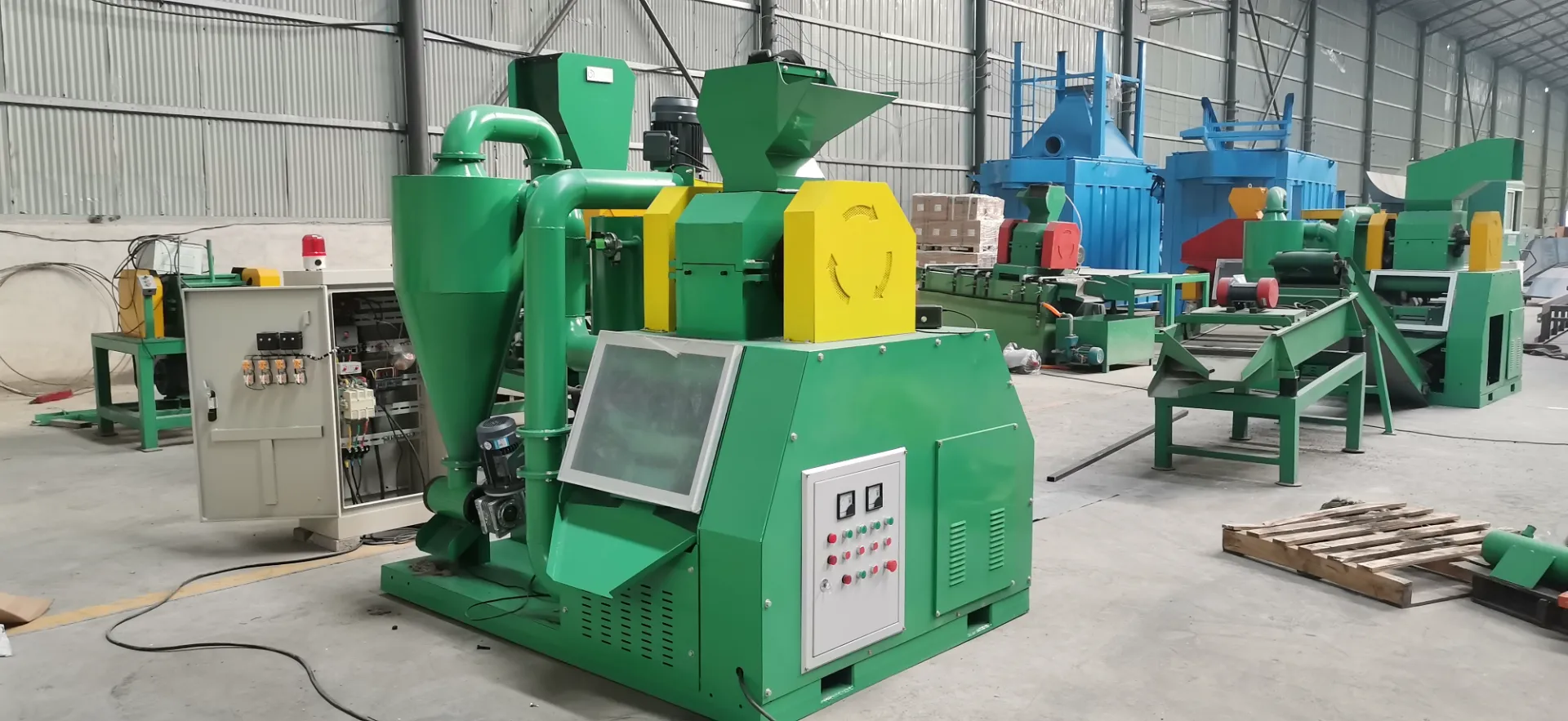

Dec . 05, 2024 09:18 Back to list
When it comes to efficient recycling and waste management, one technology stands out for its ability to separate non-ferrous metals from mixed materials—an eddy current separator. Whether you're handling aluminum, copper, or other non-ferrous metals, the eddy current separator is a powerful tool that enhances sorting precision and operational productivity. By using magnetic fields to separate metals from non-metallic materials, this device significantly improves the efficiency of your recycling operations. If you are looking to optimize your recycling facility, investing in an eddy current separator will streamline your process and reduce operational costs, ensuring that your business stays competitive in the fast-paced recycling industry.

One of the primary applications of the eddy current separator is the recovery of aluminium. Aluminum, being a non-ferrous metal, does not attract magnets, but the eddy current separator aluminium utilizes high-speed rotating magnets to generate a powerful repulsive force. This force pushes aluminum particles away from other materials, effectively separating them. This method is highly effective, particularly for aluminum cans, foil, and other aluminum scrap, which are often mixed with other materials in waste streams.
Using an eddy current separator aluminium system allows recyclers to efficiently capture and recover aluminum, an important material with high market value. The technology ensures that aluminum is separated cleanly and effectively, ready to be recycled and reused in manufacturing processes. The result is not only higher efficiency in aluminum recovery but also a cleaner recycling process, reducing contamination and ensuring higher-quality recycled products.
To truly appreciate the value of an eddy current separator, it’s important to understand its working principle. The system operates based on the generation of rapidly alternating magnetic fields. These magnetic fields induce eddy currents in conductive metals, such as aluminum or copper. As these currents flow through the metal, they create their own magnetic fields that oppose the original magnetic field, causing the metals to be expelled from the material flow at a high speed.
The eddy current separator working principle involves a rotating drum or belt that carries the material over a magnetic rotor. The rotor generates the alternating magnetic field, which interacts with the conductive metals in the material stream. Non-ferrous metals, such as aluminum, are pushed away from the rest of the material, which typically consists of plastics, glass, or ferrous metals. This separation process allows for more efficient recycling and higher-quality output, as non-ferrous metals are isolated and removed with minimal effort.
The eddy current separator is indispensable in modern recycling operations due to its ability to process large volumes of material while maintaining high separation efficiency. This equipment works quickly and with precision, allowing recyclers to process waste at a faster rate than manual sorting methods, ultimately reducing labor costs and increasing throughput. Additionally, the eddy current separator is highly versatile, capable of handling a variety of materials, including aluminum, plastics, and other non-ferrous metals.
The efficiency of an eddy current separator in non-ferrous metal recovery also leads to environmental benefits. By improving the quality and quantity of recycled metals, the system reduces the need for mining raw materials, decreasing the environmental impact associated with material extraction. This makes the eddy current separator an essential tool for recycling businesses that aim to minimize waste, reduce their carbon footprint, and contribute to a more sustainable circular economy.
Integrating eddy current separator technology into your recycling facility can vastly improve operational efficiency and profitability. For businesses that handle large quantities of mixed materials, such as scrap metal yards or e-waste recyclers, the eddy current separator provides a clear advantage. It quickly and effectively separates valuable non-ferrous metals, such as aluminum, from a mixture of other materials, ensuring a higher yield of recyclable materials.
To get the most out of your eddy current separator, it's crucial to invest in the right equipment based on your specific needs. Factors like material type, volume, and desired purity levels should be considered when selecting the separator. For example, if you’re primarily dealing with aluminum recovery, an eddy current separator aluminium model may be your best choice. Additionally, regularly maintaining the system and adjusting the machine settings can further optimize separation efficiency, ensuring consistent, high-quality results.
The Future of Recycling with Eddy Current Separators
The eddy current separator is a revolutionary technology that significantly enhances the efficiency and effectiveness of metal recycling processes. Whether you're focused on recovering aluminium or other non-ferrous metals, this technology ensures cleaner separation and higher-quality output. By understanding the eddy current separator working principle, recycling businesses can improve their operations, reduce contamination, and increase the recovery of valuable materials.
Latest news
Double Shaft Shredder Price Explained: Global Trends, Benefits & Vendor Comparisons
NewsNov.24,2025
Expert Insights into Double Shaft Shredder Factory: Boosting Global Recycling Efficiency
NewsNov.23,2025
Leading Double Shaft Shredder Suppliers for Industrial Recycling and Waste Management
NewsNov.23,2025
Leading Double Shaft Shredder Manufacturers | Durable & Sustainable Industrial Shredders
NewsNov.23,2025
Understanding Double Shaft Shredder Machine Price: Buyers’ Guide & Global Insights
NewsNov.22,2025
The Essential Guide to Double Shaft Shredders: Benefits, Applications & Trends
NewsNov.22,2025